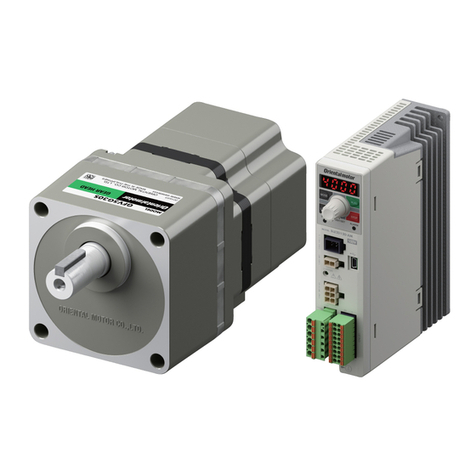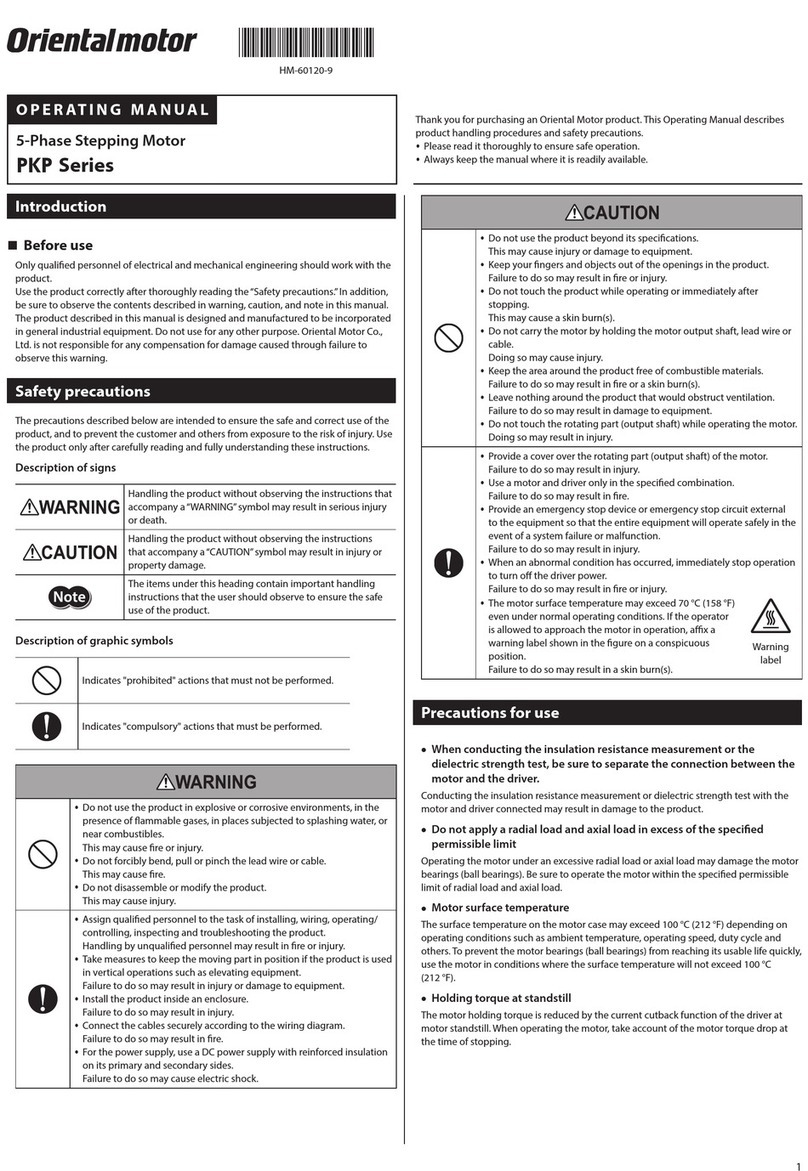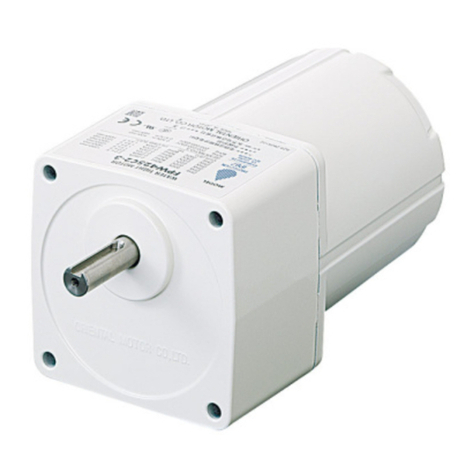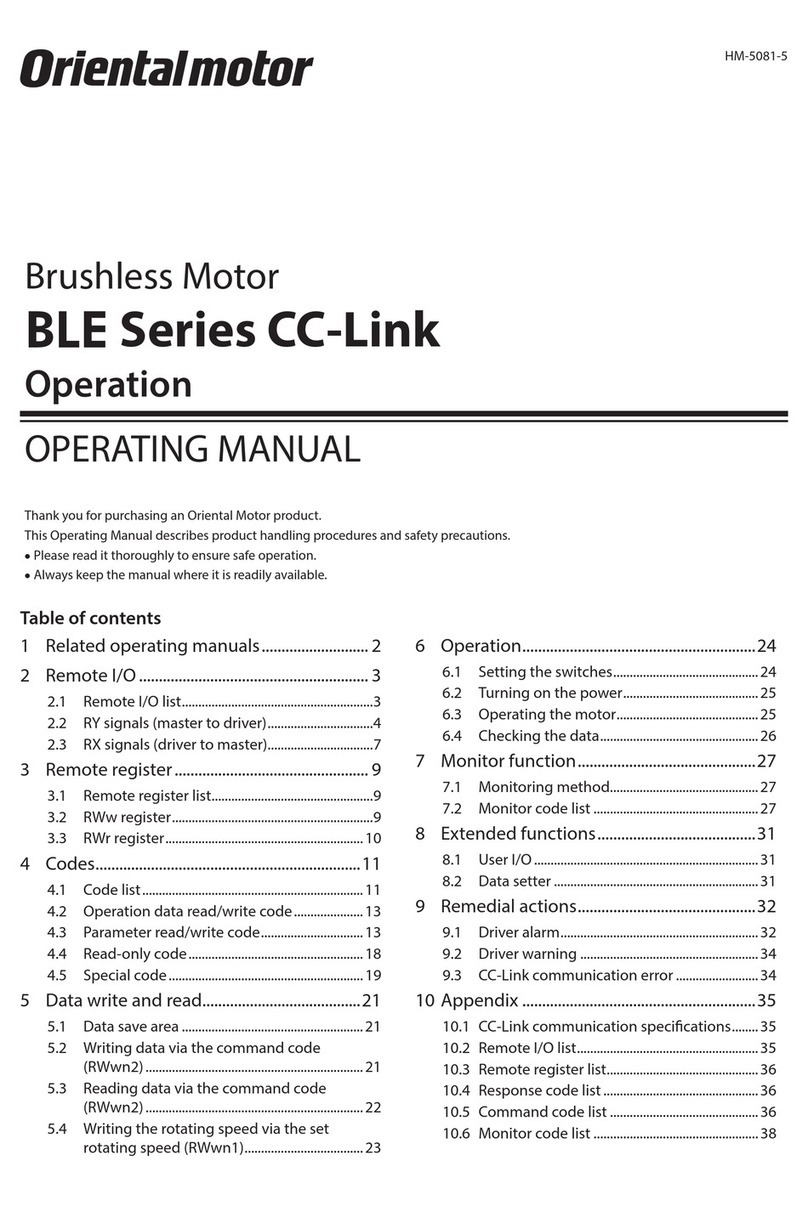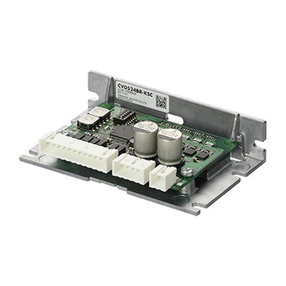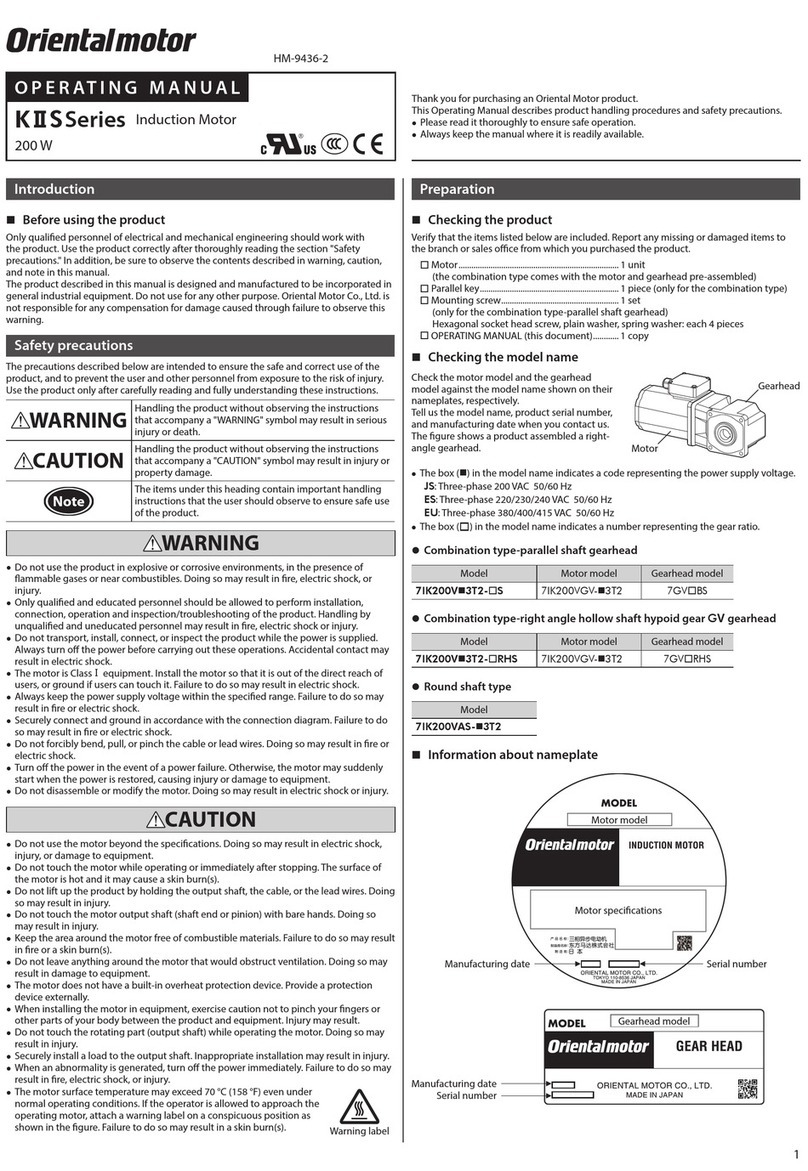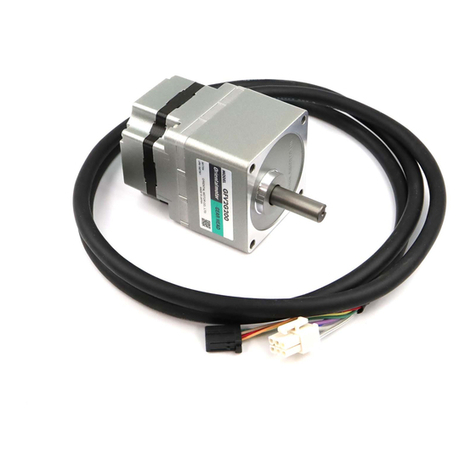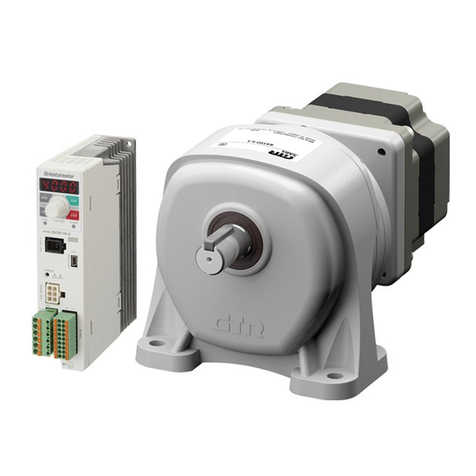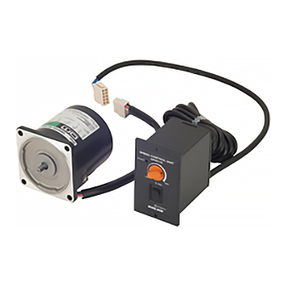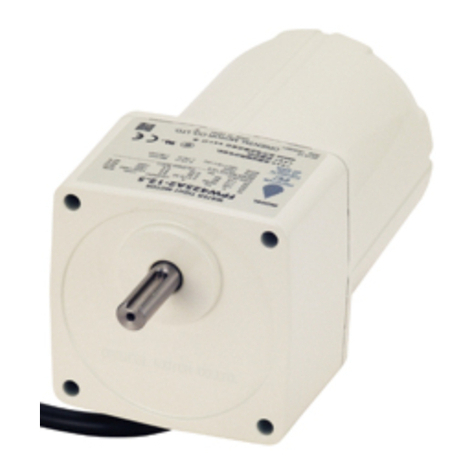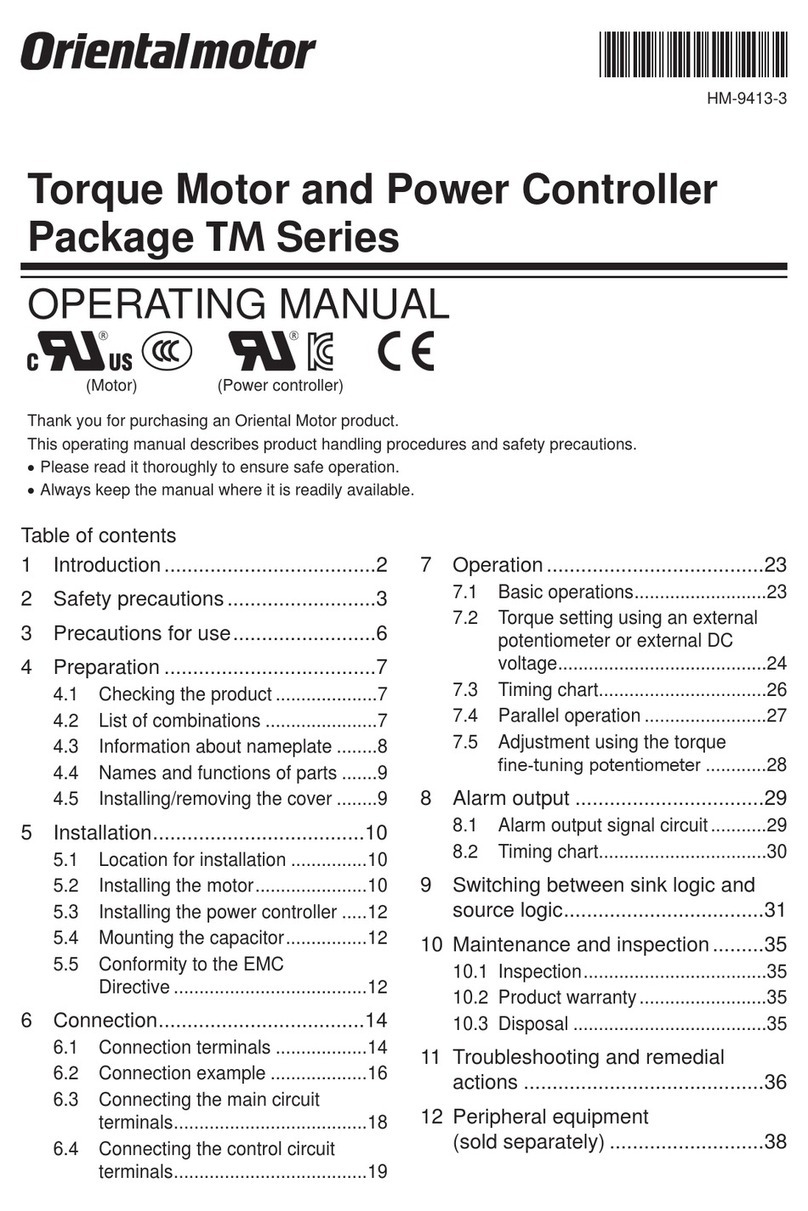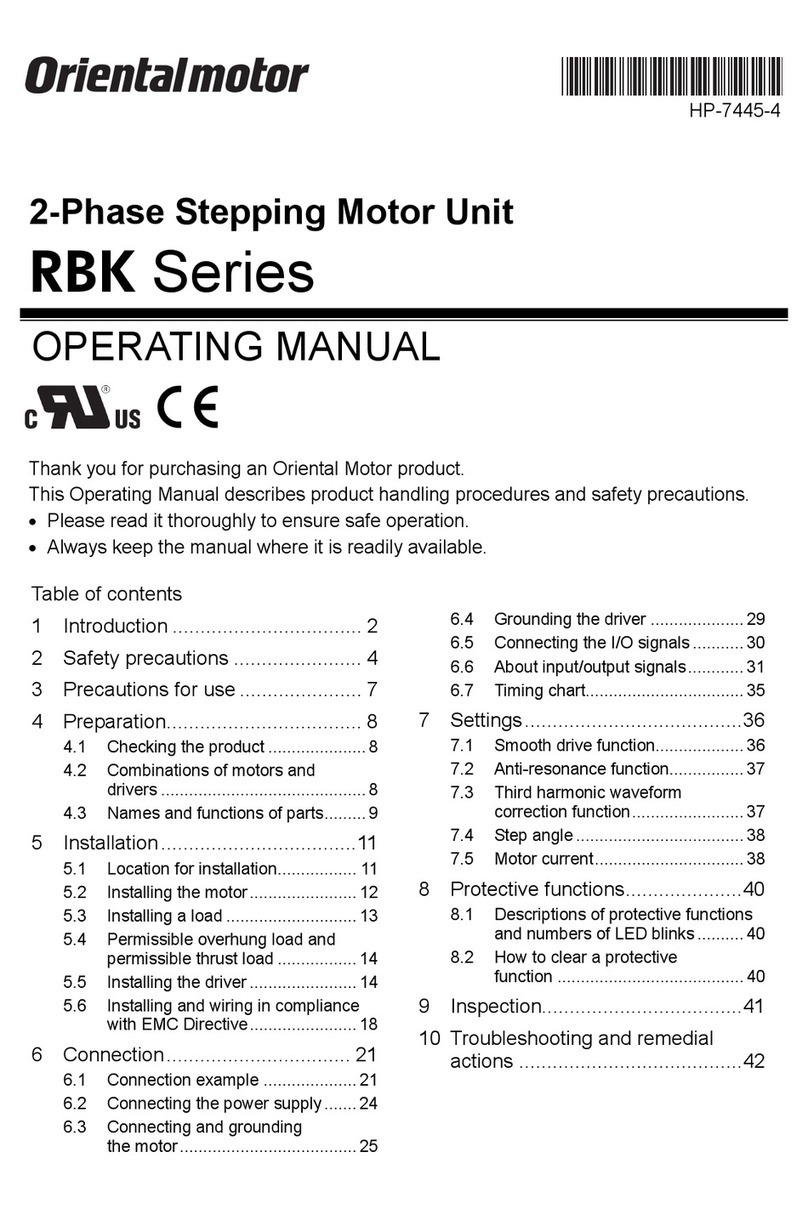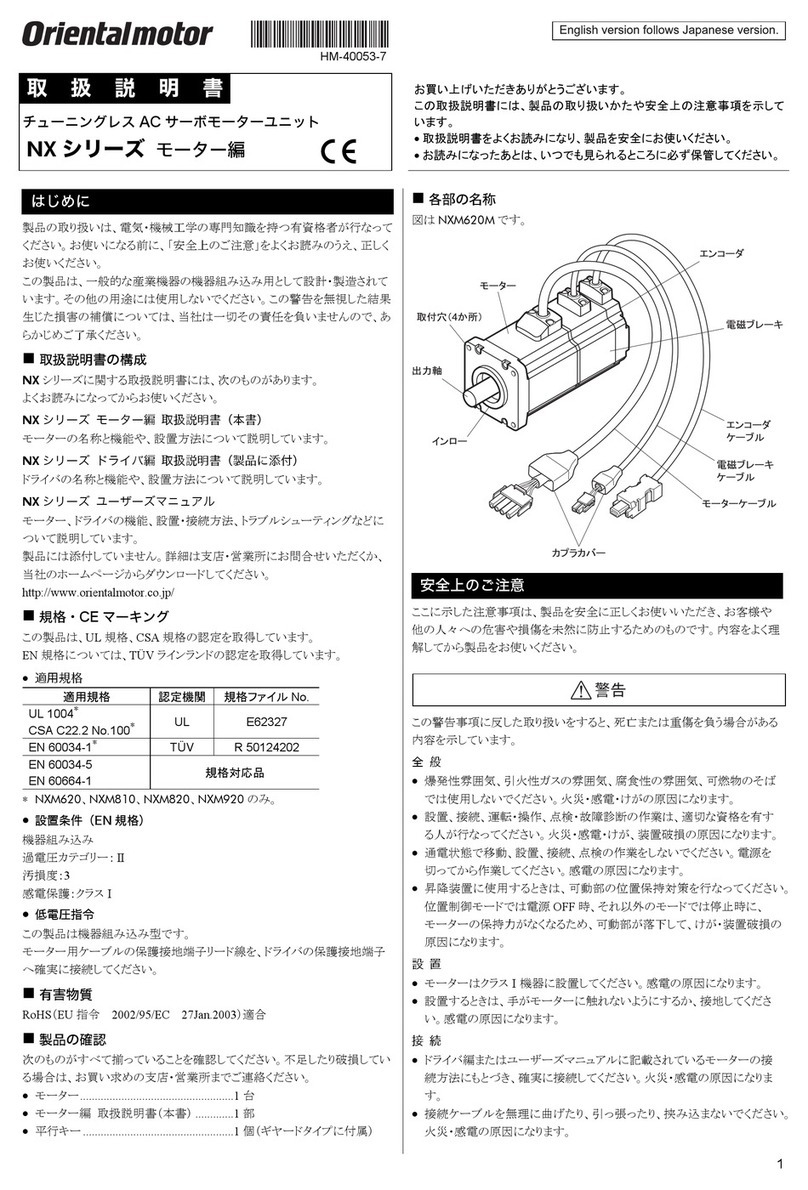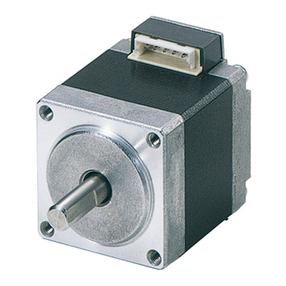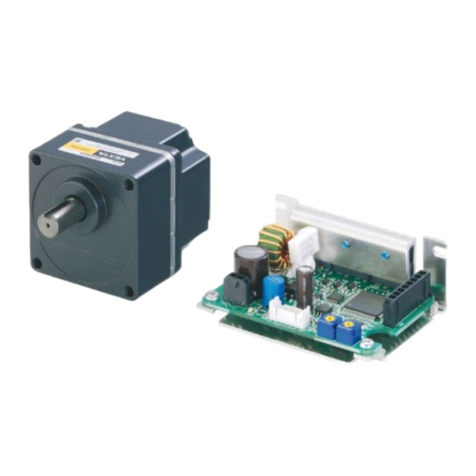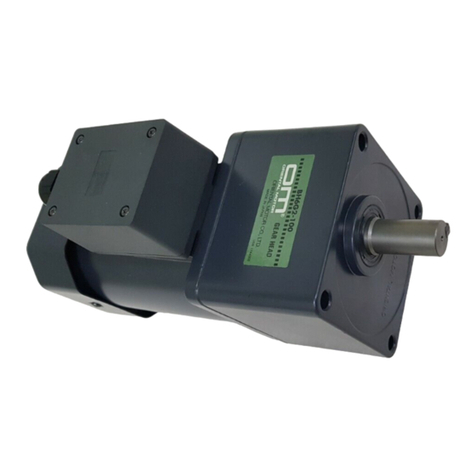
1
Introduction
Before using the motor
Only qualied personnel should work with the product.
Use the product correctly after thoroughly reading the section “Safety precautions”.
Should you require the inspection or repair of internal parts, contact the Oriental
Motor oce where you purchased the product.
The product described in this manual has been designed and manufactured for use
as an internal component for general industrial equipment, and must not be used for
any other purpose. Oriental Motor Co., Ltd. is not responsible for any damage caused
through failure to observe this warning.
Safety precautions
The precautions described below are intended to prevent danger or injury to the
user and other personnel through safe, correct use of the product. Use the product
only after carefully reading and fully understanding these instructions.
WARNING
Handling the product without observing the instructions that
accompany a “Warning” symbol may result in serious injury or
death.
CAUTION
Handling the product without observing the instructions that
accompany a “Caution” symbol may result in injury or property
damage.
Note The items under this heading contain important handling
instructions that the user should observe to ensure safe use of
the product.
WARNING
•Do not use the product in explosive or corrosive environments, in the presence of
ammable gases, locations subjected to splashing water, or near combustibles.
Doing so may result in re, electric shock or injury.
•Assign qualied personnel the task of installing, wiring, operating/controlling,
inspecting and troubleshooting the product. Failure to do so may result in re,
electric shock or injury.
•Do not transport, install the product, perform connections or inspections when
the power is on. Always turn the power o before carrying out these operations.
Failure to do so may result in electric shock.
•Do not use the electromagnetic brake for stopping or for safety purposes. Using it
for purposes other than holding the moving parts and motor in position may cause
injury or damage to equipment.
•Install the motor so as to avoid contact with hands, or ground it to prevent the risk
of electric shock.
•Install the motor in an enclosure in order to prevent electric shock or injury.
•Keep the input-power voltage within the specication to avoid re and electric
shock.
•Connect the cables securely according to the connection diagram in order to
prevent re and electric shock.
•Do not forcibly bend, pull or pinch the lead wires (cables). Doing so may result in
re and electric shock.
•Be sure to insulate the connection terminal of the capacitor. Failure to do so may
result in electric shock.
•Turn o the power in the event of a power failure, or the motor will suddenly start
when the power is restored and may cause injury or damage to equipment.
•Do not touch the connection terminal of the capacitor immediately after the
power is turned o (for a period of 30 seconds). The residual voltage may cause
electric shock.
•Do not disassemble or modify the motor. This may cause electric shock or injury.
CAUTION
•Do not use the motor beyond its specications, or electric shock, injury or damage
to equipment may result.
•Do not touch the motor during operation or immediately after stopping.
The surface is hot and may cause a skin burn(s).
•Do not hold the motor output shaft or motor lead wires (cables). This may cause
injury.
•Keep the area around the motor free of combustible materials in order to prevent
re or a skin burn(s).
•To prevent the risk of damage to equipment, leave nothing around the motor that
would obstruct ventilation.
•The motor does not have a built-in overheat protection device. Provide a
protection device externally.
•To prevent bodily injury, do not touch the rotating parts (output shaft, cooling fan)
of the motor during operation.
•When an abnormality is noted, turn o the power immediately, or re, electric
shock or injury may occur.
•The motor surface temperature may exceed 70 °C (158 °F) even
under normal operating conditions. If the operator is allowed to
approach the running motor, attach a warning label as shown in
the gure in a conspicuous position.
Failure to do so may result in a skin burn(s). Warning label
•Dispose the product correctly in accordance with laws and regulations, or
instructions of local governments.
Preparation
Checking the product
Verify that the items listed below are included. Report any missing or damaged items
to the branch or sales oce from which you purchased the product.
•Motor............................................... 1 unit
•Capacitor ........................................ 1 piece (only for single-phase motors)
•Operating manual ...................... 1 copy (this document)
Checking the model name
Check the model number against the number indicated on the product.
Refer to p.2 for the Connection diagram.
zSingle-phase motors (Connection diagram: ①)
Output power Model
Pinion shaft type Round shaft type
6 W 2RK6GN-AM 2RK6A-AM
2RK6GN-CM 2RK6A-CM
15 W 3RK15GN-AM 3RK15A-AM
3RK15GN-CM 3RK15A-CM
25 W 4RK25GN-AM 4RK25A-AM
4RK25GN-CM 4RK25A-CM
40 W 5RK40GN-AM 5RK40A-AM
5RK40GN-CM 5RK40A-CM
zSingle-phase motors (Connection diagram: ②)
Output power Model
Pinion shaft type Round shaft type
60 W 5RK60GU-AMF2 5RK60A-AMF2
5RK60GU-CMF2 5RK60A-CMF2
90 W 5RK90GU-AMF2 5RK90A-AMF2
5RK90GU-CMF2 5RK90A-CMF2
zThree-phase motors (Connection diagram: ③)
Output power Model
Pinion shaft type Round shaft type
15 W 3IK15GN-SM 3IK15A-SM
25 W 4IK25GN-SM 4IK25A-SM
40 W 5IK40GN-SM 5IK40A-SM
zThree-phase motors (Connection diagram: ④)
Output power Model
Pinion shaft type Round shaft type
60 W 5IK60GU-SMF2 5IK60A-SMF2
90 W 5IK90GU-SMF2 5IK90A-SMF2
HM-9094-7
OPERATING MANUAL Thank you for purchasing an Oriental Motor product.
This Operating Manual describes product handling procedures and safety
precautions.
•Please read it thoroughly to ensure safe operation.
•Always keep the manual where it is readily available.
K Series
Electromagnetic Brake Motors
